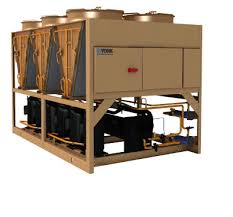Best Practices For Chiller Maintenance
Chiller Introduction
 |
Chiller is a machine that removes heat from a liquid via a vapor-compression or absorption refrigeration cycle
This liquid can then be circulated through a
heat-exchanger to cool equipment, or another process stream (such as air or process water
Chiller Maintenance
Compared to a major chiller failure, a sound preventive and predictive maintenance program is a minor cost
Implementing a best-practice maintenance plan will save money over the life of the chiller and ensure longer chiller life
To effective maintain chillers, you must
1) bring the chiller to peak efficiency
2) maintain that peak efficiency
There are some basic steps that facilities professionals can take to make sure their chillers are being maintained properly
1)Checking water treatment: Checking the water treatment of the condenser-water open loop weekly will reduce the frequency of condenser tube cleaning and the possibility of a tube failure
2)Inspecting and cleaning tubes: The tubes in the evaporator and condenser bundles should be inspected once a year
Maintenance Schedule For Chiller
Best on practice and working experience the following is a chiller maintenance schedule
| Description | Comments | Maintenance Frequency | ||
|
|
|